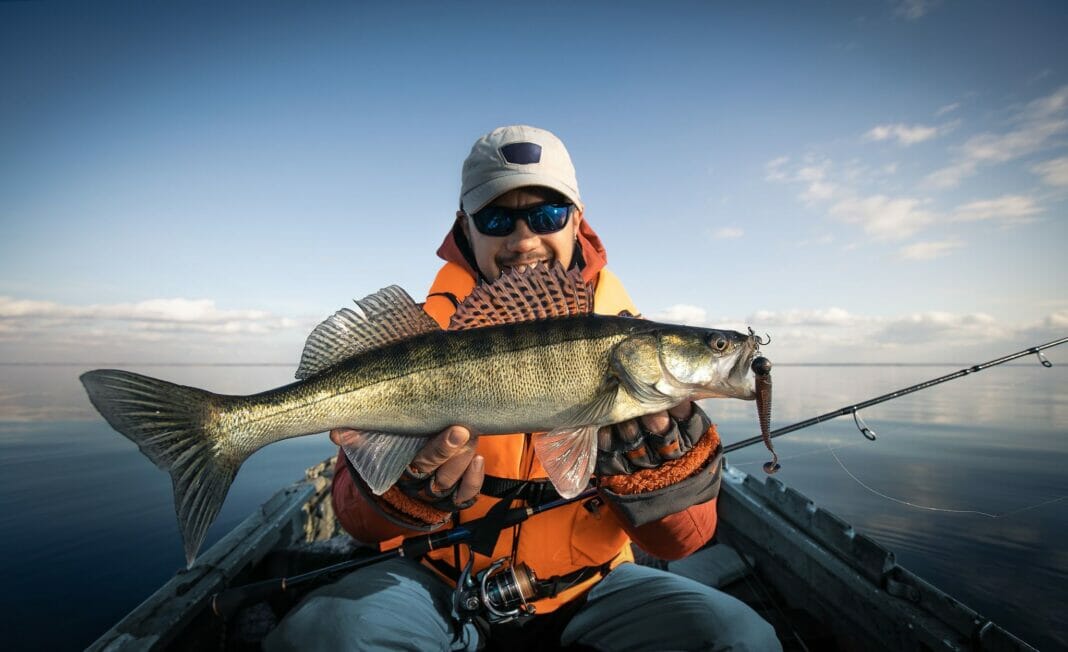We’re about to embark on an epic underwater adventure with two fin-tastic buddies: the Largemouth and Smallmouth Bass. These cheeky underwater critters are the ultimate celebrities in the freshwater world, loved by anglers of all skill levels. Get ready to unleash your inner bass-catching ninja and reel in some serious bragging rights!
This guide is your backstage pass to the aquatic theater, where we’ll spill all the juicy secrets and techniques for landing those whoppers. We want you to return home with tales of epic battles, where the bass were so enormous that even Bigfoot would be jealous!
So, sharpen your hooks, polish your fishing goggles, and strap on your lucky fishing hat. We’re diving headfirst into the world of bass fishing. Get ready to make waves and let the fishy games begin!
Largemouth Bass Fishing Techniques
Largemouth Bass are the most popular game fish in the United States. They can be found in almost any freshwater environment – from lakes and ponds to creeks and rivers. If you want to improve your Largemouth Bass fishing success, try these techniques:
A. Flipping and Pitching
Flipping and pitching are short-casting techniques that allow you to present your bait with pinpoint accuracy. These techniques are best suited for when bass are hiding in thick covers, like grass beds, docks, or fallen trees. Use a soft plastic bait like a crawfish or a jig and work the lure slowly on the bottom, giving the fish plenty of time to strike.
B. Topwater Fishing
One of the most exciting ways to catch Largemouth Bass is by using topwater lures. These are designed to mimic a frog, mouse or injured baitfish, causing the bass to strike aggressively on the surface. Fish topwater lures in the early morning, late afternoon, or overcast days when bass are more likely to be feeding near the surface.
C. Spinner Baits
Spinner baits are incredibly versatile lures that can be used in a variety of situations. Their spinning blades create vibration, flash, and water displacement, making them irresistible to bass. Cast your spinner bait around submerged structures or weed lines, varying your retrieve speed to imitate a fleeing baitfish.
Smallmouth Bass Fishing Techniques
Smallmouth Bass prefer cooler water temperatures and can often be found in rocky areas of lakes and rivers. They are known for their acrobatic leaps and hard-fighting abilities. Here are some techniques to catch Smallmouth Bass:
A. Drop Shot
Drop shooting is a finesse technique where the weight is placed below the hook, allowing your lure to be presented horizontally off the bottom. This technique is effective in clear water, where Smallmouth Bass are often found. Use a soft plastic bait like a worm or minnow and maintain contact with the bottom as you slowly retrieve the lure.
B. Crankbaits
Crankbaits are designed to swim through the water column, mimicking baitfish or crayfish. Use these lures along rocky shorelines, drop-offs, and points where Smallmouth Bass are likely to be found. Experiment with different depth-rated crankbaits to find the appropriate depth and retrieve speed for the situation.
C. Jigs
Jigs are a staple in any bass angler’s tackle box and are especially useful for targeting Smallmouth Bass. A skirted jig with a crawfish or swimbait trailer is perfect for dragging along the bottom or bouncing over rocks. Pay attention to the type of structure and cover you’re fishing, adjusting your jig size and weight accordingly.
General Bass Fishing Tips
Regardless of whether you’re targeting Largemouth or Smallmouth Bass, there are a few universal tips to improve your success:
Pay Attention to the Seasons
Bass behavior and preferred habitats change throughout the year. In spring, they spawn in shallow waters; in summer, they move to deeper structures to escape the heat; in fall, they feed aggressively in shallow water. Adjust your tactics and lure choices to match the seasonal changes.
Use Electronics
Modern fish finders have GPS, mapping, and sonar capabilities, allowing you to locate structures, cover, and even schools of baitfish from a distance. Use this technology to find those hidden spots that hold bass.
Practice Catch and Release
Bass is a precious natural resource. By practicing catch and release, you can help ensure their sustainability for future generations. Use single barbless hooks, keep the fish in the water as much as possible, and release them gently.
Conclusion
Equipped with the wisdom of this guide, you’re ready to conquer the watery realm and hook the bass of legends. But hold on tight, because it’s not just about the catch—it’s about embracing the wild, wacky, and occasionally tangled journey. Remember, be an eco-warrior, keeping nature clean and fish-friendly.
And above all, let loose and savor the thrill of fishing. Reel in laughter, dance with tangled lines and share unforgettable stories with your fishing buddies. So, my friends, cast away your sharp hooks, unyielding determination, and a heart full of laughter. Happy fishing, tight lines, and may the bass gods bless you!


